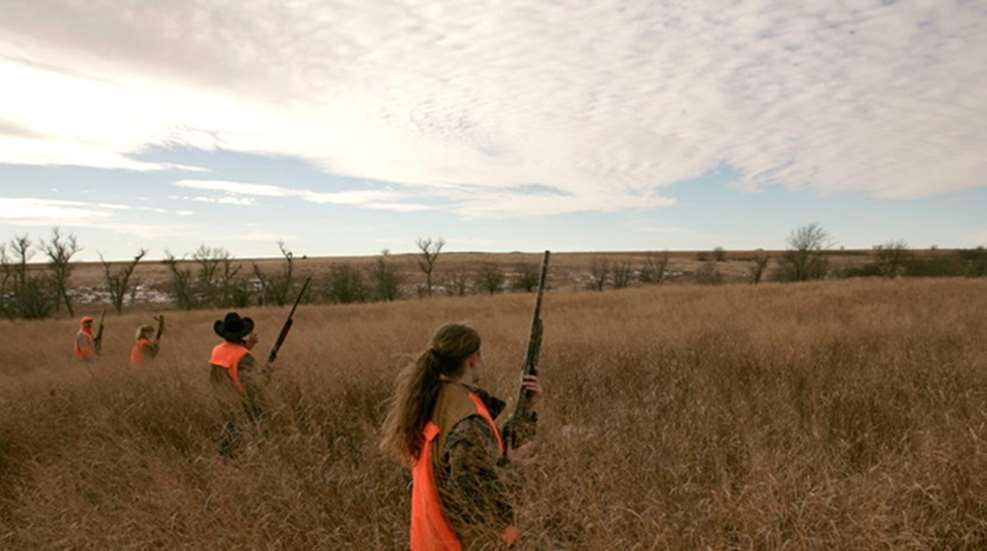** When you buy products through the links on our site, we may earn a commission that supports NRA's mission to protect, preserve and defend the Second Amendment. **

Chances are you already know the NRA's Three Rules of Gun Safety (1.ALWAYS keep the gun pointed in a safe direction; ALWAYS keep your finger off the trigger until ready to shoot; ALWAYS keep the gun unloaded until ready to use.), and those rules will always apply...everywhere, every time, every gun, every person. But when you're heading into the field with a firearm, there are some additional rules to follow. Any time you're out in the wilderness with a long gun, these rules will help keep you, your hunting party and your legal status safe.
1. Be positive of your target's identity before shooting.
This might sound overly simplistic, but the fact remains that, every year during whitetail season, farmers everywhere are forced to spray-paint their cattle or risk having them "harvested" by hunters who don't bother confirming the species of the large ungulate in their sights. Why does this happen? The most likely explanation is "buck fever," meaning that the hunter wants so badly to see a nice big buck that sometimes his eyes deceive him into thinking that there's one there. When in doubt, don't shoot. (This will become something of a refrain.)
2. Take time to fire a safe shot.
If, in order to make your shot, you must move too quickly or in a way that might allow your muzzle to cover something you're not prepared to see destroyed...don't do it. If you're not sure of what's on the other side of the game animal...don't do it. It's better to pass up a trophy animal than to put yourself or any other people in your vicinity at risk.
3. If you fall...
Things happen in the woods. No matter how surefooted you are or how great your boots, even the most graceful among us will take a tumble sooner or later. If you fall, try to control where the muzzle of your gun points. After a fall, check your gun for dirt and damage, and make sure the barrel is free of obstructions.
4. Scopes are not binoculars.
Never use a riflescope as a substitute for binoculars. The temptation to do so is real, but when one does this, one is by definition pointing the muzzle of the gun at unknown targets.
5. Know how to cross a fence.
When you are alone and must cross a fence, unload your firearm and place it under the fence with the muzzle pointed away from where you are crossing. When hunting with others, and you must cross a fence, unload the gun and keep the action open. Have one of your companions hold the gun while you cross. When over the fence, take your gun and your companion's unloaded gun, so that he or she may cross safely.
6. Know when to unload.
When finished hunting, unload your firearm before returning to camp. You should also unload your gun before attempting to climb a steep bank or travel across slippery ground.
1. Be positive of your target's identity before shooting.
This might sound overly simplistic, but the fact remains that, every year during whitetail season, farmers everywhere are forced to spray-paint their cattle or risk having them "harvested" by hunters who don't bother confirming the species of the large ungulate in their sights. Why does this happen? The most likely explanation is "buck fever," meaning that the hunter wants so badly to see a nice big buck that sometimes his eyes deceive him into thinking that there's one there. When in doubt, don't shoot. (This will become something of a refrain.)
2. Take time to fire a safe shot.
If, in order to make your shot, you must move too quickly or in a way that might allow your muzzle to cover something you're not prepared to see destroyed...don't do it. If you're not sure of what's on the other side of the game animal...don't do it. It's better to pass up a trophy animal than to put yourself or any other people in your vicinity at risk.
3. If you fall...
Things happen in the woods. No matter how surefooted you are or how great your boots, even the most graceful among us will take a tumble sooner or later. If you fall, try to control where the muzzle of your gun points. After a fall, check your gun for dirt and damage, and make sure the barrel is free of obstructions.
4. Scopes are not binoculars.
Never use a riflescope as a substitute for binoculars. The temptation to do so is real, but when one does this, one is by definition pointing the muzzle of the gun at unknown targets.
5. Know how to cross a fence.
When you are alone and must cross a fence, unload your firearm and place it under the fence with the muzzle pointed away from where you are crossing. When hunting with others, and you must cross a fence, unload the gun and keep the action open. Have one of your companions hold the gun while you cross. When over the fence, take your gun and your companion's unloaded gun, so that he or she may cross safely.
6. Know when to unload.
When finished hunting, unload your firearm before returning to camp. You should also unload your gun before attempting to climb a steep bank or travel across slippery ground.







































